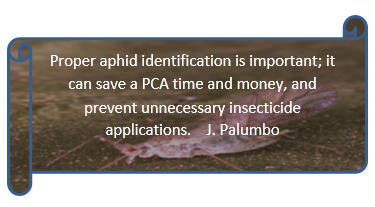
|
|
|
|

|
|||
|
|
|||
|
It appears that the weather has finally broken, although it is forecasted to be
in the 80’s later this week. Nonetheless, it should soon begin to feel like “winter”
in the desert. With cooler temperatures, you can expect a steady decline in insect
abundance until temperatures begin to warm up again in February. Of course last
winter, we had no winter. I don’t expect that again but it is always interesting
to look back over this past fall in anticipation of what we might experience this
spring. A quick look at both recent and historic data on pest abundance recorded
from our research plots here at YAC and from our
Area Wide Trap Network

Remember, When in Doubt . . . . . “SCOUT”
Click picture to listen to John’s update
To contact John Palumbo go to: jpalumbo@ag.arizona.edu |
|||
| Back | |||
|
For questions or comments on any of the topics please contact Marco Pena at the Yuma Agricultural Center.
|
|||
|
Home |
Cotton | Veggies |
Forages | Grains
| Citrus |
Crop x Crop Insects | Diseases| Weeds | Pesticides | Economics | News | Weather | Research | Photos | Contacts | General Info. Copyright © 2001 University of Arizona, College of Agriculture and Life Sciences Webmaster: Al Fournier (acis@ag.arizona.edu) |
|||
